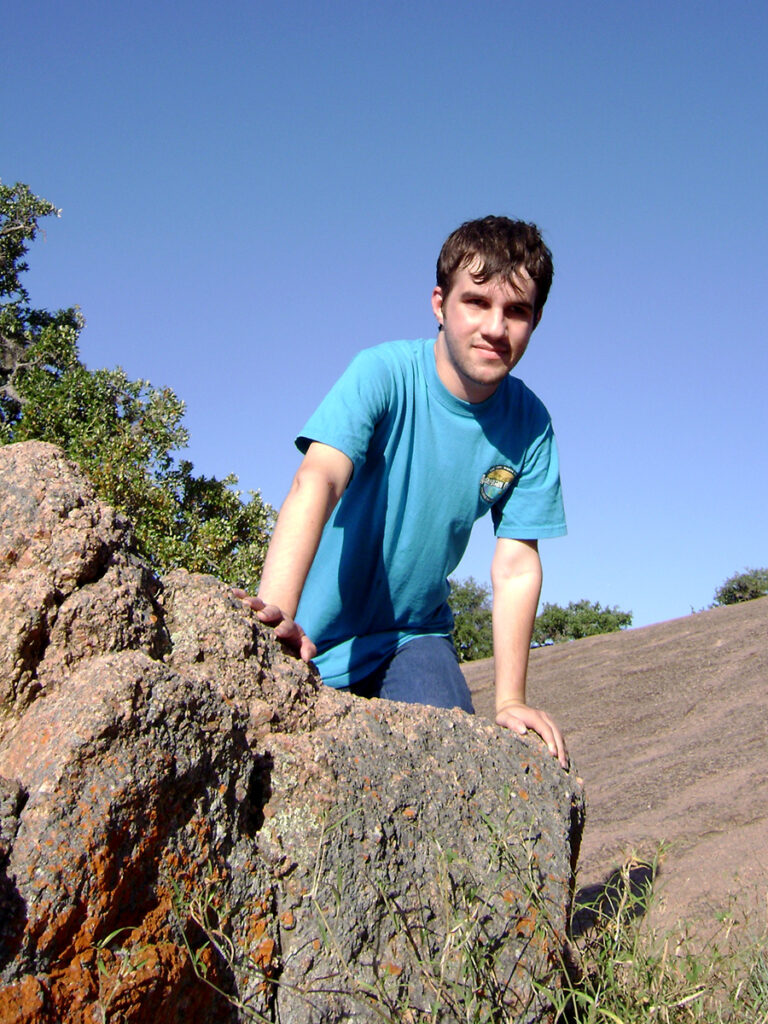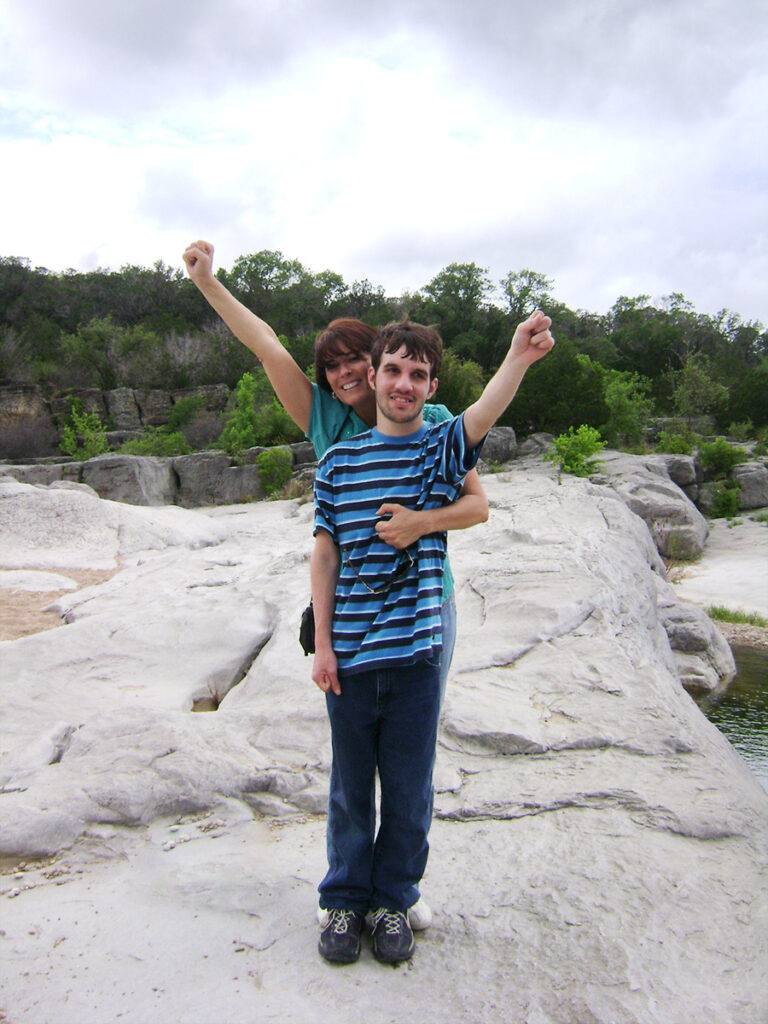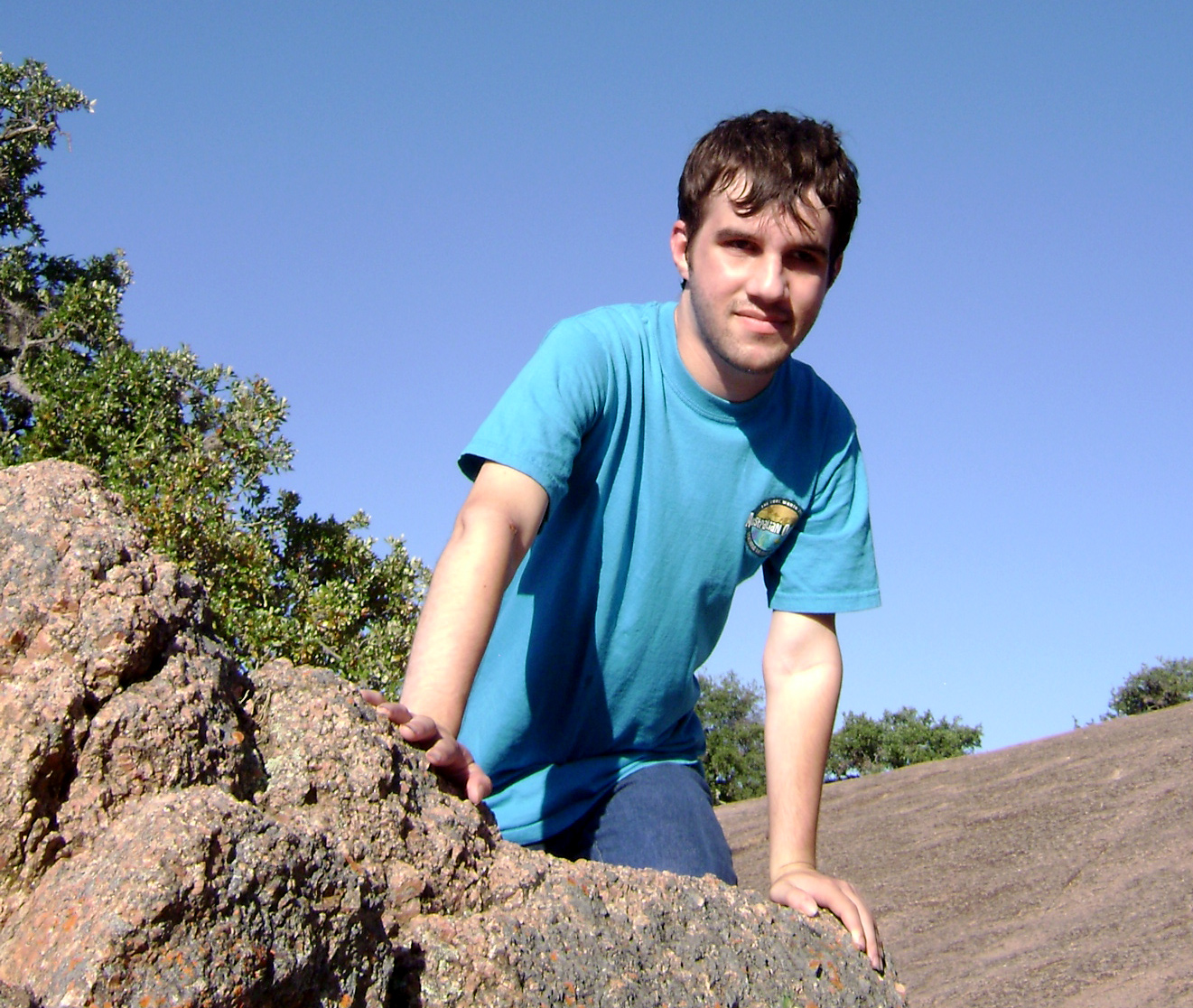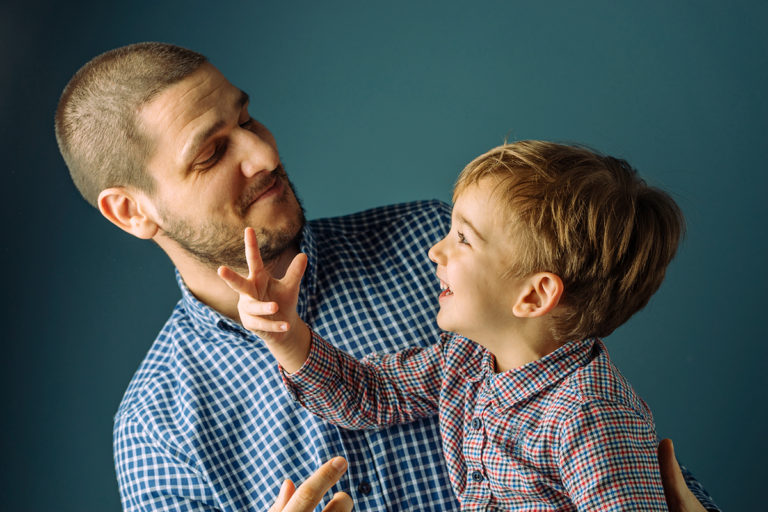Fear No Mountain – Evan Waldeck
By Lyn Waldeck
 Our story, which by no means is at its end, began in the mountains. To be specific the Transylvanian Mountains. During Christmas of 1990, a specific child was brought to our attention that was in desperate need of a family. Florin Valc, who later became our son Evan Waldeck, had spent the first two years of his life in a Romanian Orphanage, abandoned at birth. For those of you who are not familiar with the news coverage of the Romanian Orphans, severe and cruel depravation is an understatement. These children were left without attention in their beds all day, some of them tied to the slats to keep them still. They were malnourished, unclothed and never touched, held or loved. The bitter winters of Romania were often spent in nothing more than underpants in a non-heated room.
Our story, which by no means is at its end, began in the mountains. To be specific the Transylvanian Mountains. During Christmas of 1990, a specific child was brought to our attention that was in desperate need of a family. Florin Valc, who later became our son Evan Waldeck, had spent the first two years of his life in a Romanian Orphanage, abandoned at birth. For those of you who are not familiar with the news coverage of the Romanian Orphans, severe and cruel depravation is an understatement. These children were left without attention in their beds all day, some of them tied to the slats to keep them still. They were malnourished, unclothed and never touched, held or loved. The bitter winters of Romania were often spent in nothing more than underpants in a non-heated room.
When we first heard of this, the overwhelming desire to offer more to a child set our journey in motion. A missionary friend of ours put us in contact with a Romanian pastor who lived in Dallas. Marin Tomulet, the pastor, had helped other families adopt children out of his homeland. He had relatives that still lived there who had assisted with several adoptions.
From the very first phone call we had with Marin, he told us of a specific child who was in a very dangerous situation. Florin had spent 2 years in the orphanage only to be taken out by his biological mother for reasons that we were certain pertained to child support or government assistance. Once she was turned down, she did not want the child and planned to return him or to adopt him out. We were told that the mother was harsh with the child but could not begin to imagine the fate that was in store for the precious child that we saw a picture of.
During the winter of 1991, times were very confusing. The Gulf War was in progress, so overseas phone lines were hard to come by. The Romanian government did not help either. Due to the negative press reports they were slowing down and stopping all adoptions. They began with orphanage adoptions and then voted on a law to stop private adoptions as well. For six months we tried desperately to accomplish an adoption by proxy to no avail. As we followed the news and fought time, we finally heard in June of 91 that private adoptions had stopped as well. Only by the grace of God did we find one person who offered hope. A Montana attorney that our social worker knew explained that a rumor he heard stated that “yes the law was passed, but the President of Romania had not signed it yet, although he planned to”. Only on an outside chance of the rumor being correct could we give it one last try.
Adoptions were to have stopped on June 1st, and on June 7th I boarded a plane for a far away country, all alone with no idea how I was going to accomplish this goal. We just knew that we had to give it our best shot. After arriving in Bucharest, the hard part started. All I needed to do was make it 7 hours into the interior of the country to a village called Tiush. Here I was to find Marin’s brother Daniel. I knew that Daniel lived near a bridge, drove a white van and could take me to the next village where Marin’s mother in law knew where to find the child.
If this sounded difficult to do, it was by no means the hard part of the trip. When arriving in Tiush, Daniel explained that the last time he had checked, the child had been taken to the hospital with pneumonia. If this had only been true, it would have been the good news. In reality the mother had made up this story to stop people from checking on the child.
Our next step was to go to Auid. There Daniel and I located Domnica, Marin’s mother-in-law, at church on Sunday night and she escorted us to the child’s home to inquire which hospital he was in. Nothing could have ever prepared me for what I was to experience. A young girl, about 7 years old, answered the door at the home. After a moment of inquiry she replied in Romanian and pointed to the next room. Daniel turned to me with a drained face and uttered “the child is dead”.
Quietly, in what seemed to be slow motion, we entered a small concrete two-room apartment. There the child had been set aside to be buried the next morning. I was still hoping for the best, praying they were wrong. As I picked up the broken little body, I realized there was a very shallow breathing pattern. My son, Evan, was unconscious, wrapped in layers of clothing and plastic. He had a wool cap on his head to hide the swelling. All of this clothing, in the middle of June only to hide the frail and broken body from others who might see him. As I took off the cap, what I found was a very enlarged head. All of his hair had fallen out due to mal-nutrition. He was covered in his own waste and had obviously been beaten and starved for weeks. He had cigarette burns all over his body and a hand imprint around his throat. Later CT scans and x-rays confirmed fourteen broken bones, two skull fractures and massive brain damage. Here in the region of Translyvania, we faced our first mountain.
Many different ups and downs occurred during the next 5 weeks that it took for me to get Evan home. The first of which was a trip to a physician, who through my interpreter explained “The child has a disease that is making his head explode. We must put nails in the head.” Looking back I am sure there must have been something lost in the translation, but my confidence that they could help him at that moment diminished. I would just have to wait until I got back to the medical technology of the USA.
To be very honest, this same feeling of hopelessness was only repeated later when very qualified physicians here in America saw Evan. Of course, the diagnosis was different. Basically, Evan’s damage was massive posttraumatic brain injury. There was really nothing that could be done for him medically. The first physician to give me the CT results said “What had been done to this child is appalling (as if I didn’t know). He will probably never walk, talk or see.”
Our family physician was a friend of ours and encouraged my husband and I to dismiss what we had been told. While he explained that the reading of the reports was correct, he couldn’t imagine that all this child had been through was for naught. He also cautioned me against a self-fulfilling prophecy. “If you expect nothing, that may be exactly what you get. The more you work with him the better” were wiser words. Work with him. Work with him? Okay, but exactly how do you do that?
Evan physically bounced back remarkably fast. In fact, we even had him standing and kind of walking in a short period of time. We sought out early intervention and were directed to the Commission for the Blind and a very impressive school in Dallas for visually impaired children.
This is where we were to receive services for the two school years. Three days a week, I would load up Evan and his two brothers Philip and Kenny and make the one-hour drive to Dallas. At the time Evan was about 3, Philip was 3 and a half and Kenny was 2. Here I would either sit working on a family quilt I was making or observe through a window as they worked with him, or take a drive to a local shopping center until his class was over. Evan also had home visits once a week. At the school he saw a Physical Therapist, an Occupational Therapist, an Orientation and Mobility Therapist, a Speech and Language Pathologist and a Special Education Teacher. His class consisted of 6 children and 6-7 adult therapist and aides. What more could we ask for in services? In services there was no stone uncovered. I wish I could say that Evan’s progress was proportionate to the services we received.
At the end of this time Evan’s mobility was awkward at best, he had virtually no language that was not parroted and he was functionally blind. I had really thought that Evan was much smarter than given credit. I had also seen so many articles about brain plasticity and how sometimes damaged areas could be bypassed. I kept asking if this would happen with Evan. I would usually get a very sweet smile and silence.
The people working with Evan were lovely. They truly loved the children in their care. I do not believe that they ever had anything but the very best of intentions. I just felt in my gut that there had to be more for this child. One wonderful thing about the Center we were attending was that it was free of charge. Due to grants and funding, families were spared the expense. Now I really wished this had not been the case. If we had been paying for the services that were provided it is possible that we would have explored other options sooner.
I had been planning on home schooling my other sons but the idea never occurred to me with Evan. Of course it would seem that he needed much more qualified professionals than myself. After all, my background was in Real Estate Land Development and Mortgage Finance. But, then I attended a home school book fair that just happened to have a workshop for special needs home schoolers.
I had been approaching a time of transition for Evan, another mountain to cross. His age was approaching too old for the school he was attending and the public school system was the next step.
Several issues brought me great concern. While I do not ever want to over protect or shelter, I do remember being a child. I also remember the cruelty directed towards children like Evan by other children. The thought of what it would be like was heartbreaking. Even adults had said awful things in his presence thinking, “He doesn’t know what I am saying, so rudeness is okay”.
At this home school workshop I heard other mothers speak of the problems they had seen in school. Not only did I not want this for my son, these mothers said that their children had actually done much better by bringing them home. The mothers who spoke had been to NACD, the National Academy for Child Development, and had special programs designed for their children that they could implement at home. I remember asking if they believed that a cortically blind child could be taught to see. One of the mothers smiled and said that the founder’s own son, diagnosed CVI, had learned to see. Well, this was good enough for me, as it probably would be for any mother.
You can imagine what happened when I went home to tell my husband. All we had to do was come up with the money for an evaluation. Mother’s of hurt children are very easy marks. Anything that could possibly help is considered a rainbow to be chased. But, fortunately NACD has a seminar on tape that explains in detail the premise behind the programs designed for the children. After listening intently to the tapes, my husband’s response was “This is the first thing we have heard that makes sense. This is what we need to do with Evan”.
Shortly after listening to the tapes, we were put on a waiting list for our appointment. I will never forget when the call came in. We were able to get the last slot available for several months.
At our appointment many things were brought together for us about Evan. So many of his sensory channels were operating incorrectly. He had no awareness of where he was in space, which effected his gross and fine motor development. He was easily distracted by noises due to the fact that he had auditory tonal processing problems. He had sequential processing problems that kept him from being able to put pieces together mentally. This issue held him back from being able to progress with receptive and expressive language. He had organic problems that kept the hemispheres of the brain from communicating and therefore stunting his development. As Evan was described to us, it was never in the manner of “too bad these things are broke” but rather “these things really need to be worked on and possibly fixed”. Of the greatest concern was the fact that at age 5 Evan’s auditory sequential processing was where it should be at about age 1.
Then the issue of vision came up. At the time my words were “To be honest, having a blind child is not that bad. Having a child who can not think is devastating.” It was silent for a moment and then Bob Doman, NACD’s founder, took a deep breath and said, Do not give up on vision yet. Unfortunately, 2 years have passed and during this time he has been taught to be blind, and additional atrophy of the brain is our worst enemy. I don’t know what we can get back but we have to give it our best shot.” My heart almost stopped. First at the hope of gaining any vision. Second at the thought that we had done the wrong thing for the last two years and had possibly caused him additional harm.
This is the beginning of our next mountain to climb. Needless to say, I have not touched a quilting needle since and many different interests have gone by the wayside. Amazing how some of the things I spent time on before can seem so shallow now. My life now is full to the brim with children. First and foremost are my 5 sons (we have had 2 sweet surprises since our story began), in addition to that, I am blessed to be involved in the lives of many families with hurt children.
We began Evan’s program in November of 93. It consisted of about 4 hours of numerous different exercises that lasted for only a few minutes at a time. The preface behind each and every exercise is that by giving VERY specific information to the brain in the exact right way and in the exact right time frame, new neuro-pathways are developed to create higher functioning. This sounds easy, but it has not been. But the hard days were in the beginning. Just like any life change, the adjustment period is the hardest. My obsessive nature did not help in this manner. I started with great determination and did 100% of our program 7 days a week. After about 2 months I decided to only do 50% on Sundays. I had a very nice call from the home office asking me what in the world I was doing. At first I misunderstood and began to justify, only to be cut off. The exact words were “You were never expected to do this much and especially not 7 days a week. At this pace you will never last.” I did some sole searching. I had already began to see great progress with Evan and he had improved in his auditory processing by over a year in only 2 months. So much time had been wasted before. But this is when I realized that the race I had to run was a marathon and not a sprint. If I ran too hard at the beginning I would never be able to finish.
At this time we also realized that many of the symptoms that our son Philip experienced that were classic ADHD/dyslexia could be helped as well through NACD. We did not have the money to afford a second child on the program so I began to volunteer for two reasons. One reason was that they offered volunteers credit towards the fees, and the other reason was to “cheat” and figure out what to do for Philip. Volunteering actually showed me how complex and individualized the programs were. Many kids with the same diagnosis and symptoms were given different programs since different underlying roots caused the symptoms. I realized very quickly that an evaluation was the best route for Philip. It actually took about a year and a half to help Philip eliminate his symptoms and actually become an accelerated student. Today, I have 5 sons program. Each is doing exceptionally well and loves having program as part of their lives.
 Now back to Evan. During the first few months, his development exploded. He began to develop language skills, his gross and fine motor began to emerge and best of all there were glimmers of site beginning to ignite. I look back at the rate of improvement during this time and it is phenomenal. Everyone around us noticed the big differences and I was convinced that at this rate, he would be entering college at age 12. This also began the ups and downs of the mountains we climbed. Several times we seemed to stall out or reach a plateau. I could have stopped at any of these points had I not been actively involved with NACD first as a volunteer and now as a staff member. There was something about seeing other kids progress during the times that Evan slowed down that kept me realizing it was just a matter of building more connections between brain cells and stronger neuro-pathways.
Now back to Evan. During the first few months, his development exploded. He began to develop language skills, his gross and fine motor began to emerge and best of all there were glimmers of site beginning to ignite. I look back at the rate of improvement during this time and it is phenomenal. Everyone around us noticed the big differences and I was convinced that at this rate, he would be entering college at age 12. This also began the ups and downs of the mountains we climbed. Several times we seemed to stall out or reach a plateau. I could have stopped at any of these points had I not been actively involved with NACD first as a volunteer and now as a staff member. There was something about seeing other kids progress during the times that Evan slowed down that kept me realizing it was just a matter of building more connections between brain cells and stronger neuro-pathways.
I have watched clients and very dear friends get to a point after a few months or years on the program where they stop because they believe they have gotten all they will get or because they want to go on the next popular therapy. Unfortunately this is typically where the development stops. This does not diminish the preciousness of the individual child, but it is sad to wonder “what if?”
You may wonder where Evan is today. Is he still brain-injured? Yes, he is, but the wonderful thing is that most of the time people don’t realize it until they spend a good amount of time with him. He really struggles with academics and we are always having to come up with the missing pieces to gain more development. A few times we have gained an edge with outside sources such as some very good supplements but for the most part, only an edge. The development continues to come out of hard work. His brothers and I split up the work and make it fun. We figure that lemon aide is more fun than lemons. Often people ask, “will you always HAVE to do this?” With the changes it has brought in his life my response is “just try and stop me”. We also get asked, “where is he exactly”? Our response is always the same “going forward”. Some people push and ask “but what will he be able to do?“ We just smile and say “continue to go forward”. A few really stubborn, or dense, people will ask “but what are his limitations?” To this the answer is “he passed them years ago”.
Today, Evan’s mobility and structure are beautiful to watch. Conversationally, he will talk your ear off. He has a witty sense of humor and loves to tease. He can also follow conversations that are not memorized. Evan sees well enough to travel without any assistance. He can identify pictures and shoot basketballs like you wouldn’t believe. We just recently took a family vacation to Colorado. We were insane enough to take all of the kids on a breath-taking hike across the Continental Divide. To understand the depth of our insanity, we had Evan (10 and visually impaired), Philip (11), Kenny (9), Jason (4) and the new baby Grant (4 months) in a back pack. The trip was wonderful. Evan was a little slow at first but ended up completely independent and leading me out along the trail. In fact as we got back to the van and we were all exhausted, Evan smiled and exclaimed “Let’s do it again with a timer to see how fast we can make it.” For this the reward was to make a trip to the local souvenir shop to pick out the very best T-shirt for him. Without a doubt we chose a shirt which described his journey perfectly. It boldly said “Fear NO Mountain”.




